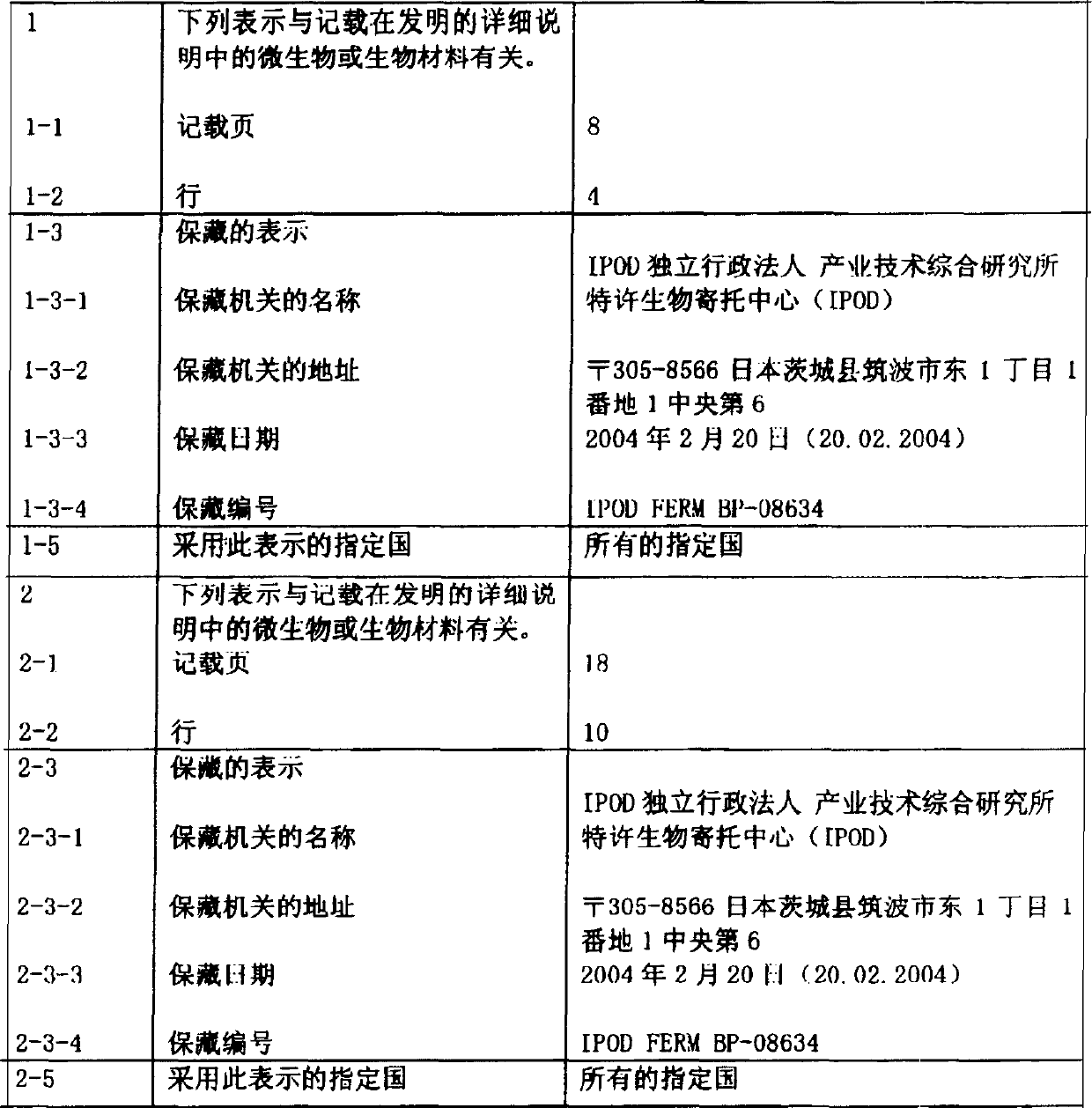Antiallergic composition
An anti-allergic and composition technology, applied in the application field, can solve the problems such as the inability to explain the degree of IgE
- Summary
- Abstract
- Description
- Claims
- Application Information
AI Technical Summary
Problems solved by technology
Method used
Image
Examples
Embodiment 1
[0072] (The lactic acid bacteria used in the embodiment of the present invention)
[0073] The lactic acid bacteria used in the examples of the present invention and the results obtained are shown in Figure 1 (No.1) and Figure 2 (No.2). All bacterial strains in the present invention are identified by sequence numbers beginning with KW. Some of these test strains were isolated independently, some were used in commercial dairy products, and some were obtained from public institutions. For convenience, their identification names were unified. The relationship between each KW strain and its source is shown in Figure 1 (No.1) and Figure 2 (No.2). In the "acquisition place" in Fig. 1, "JCM" stands for Japan Collection of Microorganisms, and "IFO" stands for the former Institute of Fermentation (currently the Bioresource Center (NBRC), an independent administrative institution for product evaluation technology).
Embodiment 2
[0075] (Evaluation of antiallergic activity of lactic acid bacteria in vitro)
[0076] 1. Sample
[0077] (de Man, Rogosa, Sharpe) culture medium (OXOID) each strain of lactic acid bacteria was cultivated for 48 hours, washed 3 times with sterilized water, suspended in sterilized water, treated at 100°C for 30 minutes, and sterilized. It was lyophilized and suspended in PBS. For the lactic acid bacteria used, refer to Fig. 1 (No. 1) and Fig. 2 (No. 2).
[0078] 2. Experimental animals, breeding
[0079] On day 0 and day 6, 7-10 week old BALB / c mice (Charles River) were intraperitoneally injected with 1 mg of ovalbumin (OVA) and 2 mg of adjuvant Alum. On the 13th day, the spleen was dissected, and the lymphocytes were prepared. In the experiment, n=6.
[0080] 3. Determination of IL-4 and IL-12 in splenocytes
[0081] IL-4 and IL-12 were measured with OptEIA ELISA Set (Becton Dickinson).
[0082] 4. Experimental conditions
[0083] Use RPMI1640 (SIGMA)+10%FCS (Rosche)+1...
Embodiment 3
[0092] (Selection of Derivatives)
[0093] This example is an example of selecting a strain with anti-allergic activity from the strains derived from the lactic acid bacteria strain KW3110 obtained in the present invention. Culture KW3110 strain statically in MRS medium at 37°C until its OD600 value is 0.8-1.0.
[0094] After diluting the culture solution with fresh MRS medium to OD600 = 0.5, suspend the bacterial cell suspension at a ratio of 10% in PBS adjusted to pH 3.0 with hydrochloric acid (dissolve tablets made by Dainippoin Pharmaceutical at the specified concentration) Incubate at 37°C for 3 hours. Dilute the acid-treated bacterial suspension with PBS and transfer it to MRS plate medium to form colonies. Pale colonies can be seen among the colonies formed. The colonies were selected and cultured in MRS medium for 48 hours. The strain was named No.90 strain. Measure the antiallergic activity of No.90 strain with the method of embodiment 2. Compared with the wild ...
PUM
 Login to View More
Login to View More Abstract
Description
Claims
Application Information
 Login to View More
Login to View More - R&D
- Intellectual Property
- Life Sciences
- Materials
- Tech Scout
- Unparalleled Data Quality
- Higher Quality Content
- 60% Fewer Hallucinations
Browse by: Latest US Patents, China's latest patents, Technical Efficacy Thesaurus, Application Domain, Technology Topic, Popular Technical Reports.
© 2025 PatSnap. All rights reserved.Legal|Privacy policy|Modern Slavery Act Transparency Statement|Sitemap|About US| Contact US: help@patsnap.com



